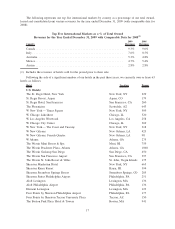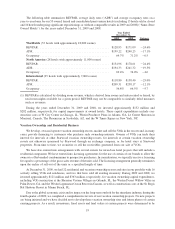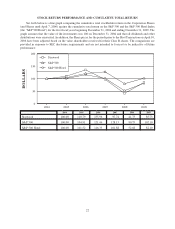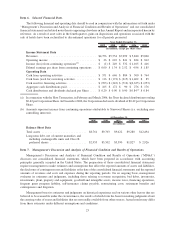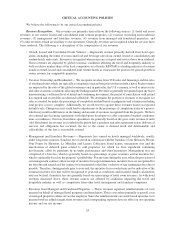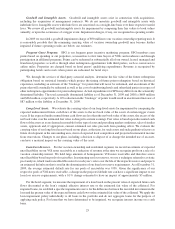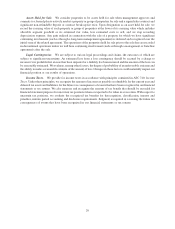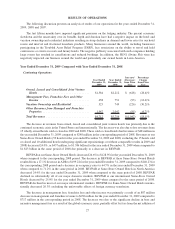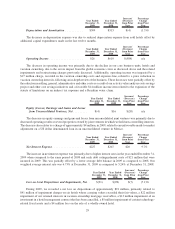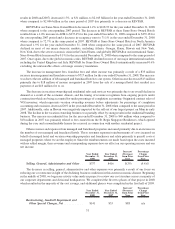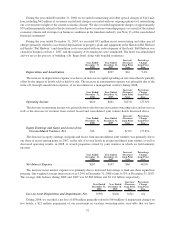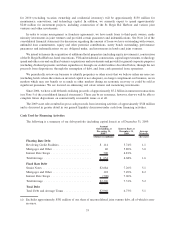Starwood 2009 Annual Report Download - page 101
Download and view the complete annual report
Please find page 101 of the 2009 Starwood annual report below. You can navigate through the pages in the report by either clicking on the pages listed below, or by using the keyword search tool below to find specific information within the annual report.Assets Held for Sale. We consider properties to be assets held for sale when management approves and
commits to a formal plan to actively market a property or group of properties for sale and a signed sales contract and
significant non-refundable deposit or contract break-up fee exist. Upon designation as an asset held for sale, we
record the carrying value of each property or group of properties at the lower of its carrying value which includes
allocable segment goodwill or its estimated fair value, less estimated costs to sell, and we stop recording
depreciation expense. Any gain realized in connection with the sale of a property for which we have significant
continuing involvement (such as through a long-term management agreement) is deferred and recognized over the
initial term of the related agreement. The operations of the properties held for sale prior to the sale date are recorded
in discontinued operations unless we will have continuing involvement (such as through a management or franchise
agreement) after the sale.
Legal Contingencies. We are subject to various legal proceedings and claims, the outcomes of which are
subject to significant uncertainty. An estimated loss from a loss contingency should be accrued by a charge to
income if it is probable that an asset has been impaired or a liability has been incurred and the amount of the loss can
be reasonably estimated. We evaluate, among other factors, the degree of probability of an unfavorable outcome and
the ability to make a reasonable estimate of the amount of loss. Changes in these factors could materially impact our
financial position or our results of operations.
Income Taxes. We provide for income taxes in accordance with principles contained in ASC 740, Income
Taxes. Under these principles, we recognize the amount of income tax payable or refundable for the current year and
deferred tax assets and liabilities for the future tax consequences of events that have been recognized in our financial
statements or tax returns. We also measure and recognize the amount of tax benefit that should be recorded for
financial statement purposes for uncertain tax positions taken or expected to be taken in a tax return. With respect to
uncertain tax positions, we evaluate the recognized tax benefits for derecognition, classification, interest and
penalties, interim period accounting and disclosure requirements. Judgment is required in assessing the future tax
consequences of events that have been recognized in our financial statements or tax returns.
26



